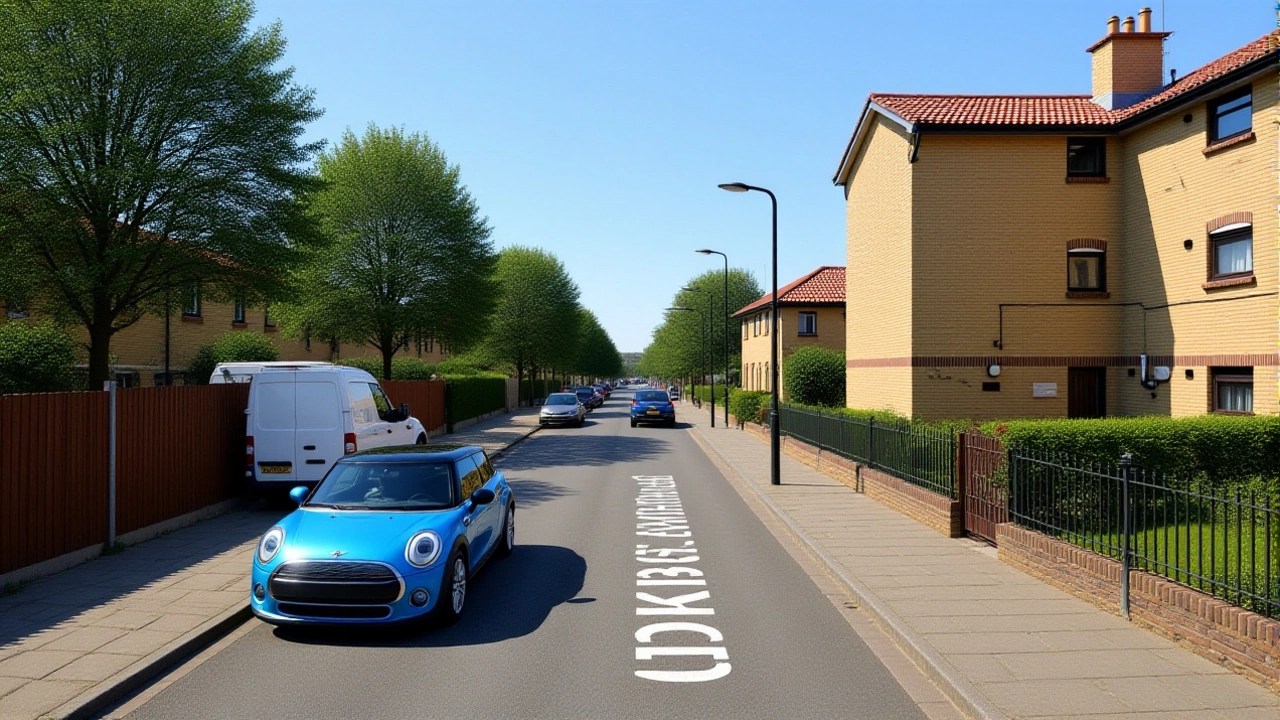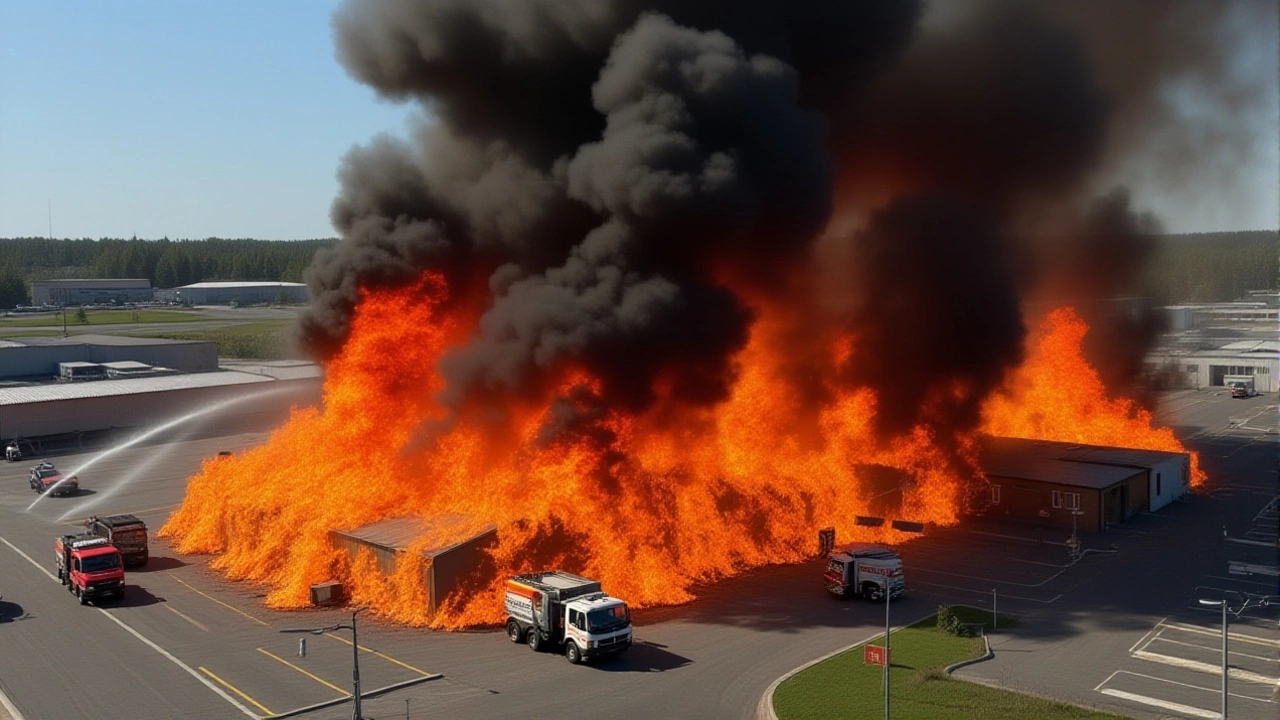A massive fire ripped through a two-storey warehouse and retail complex on Bridge Road, Southall, west London, on Tuesday, November 25, 2025 — triggering the London Fire Brigade’s highest alert level: a major incident. By mid-afternoon, thick black smoke could be seen for miles, rolling over rooftops and blanketing neighborhoods from Ealing to Hayes. What made this different from any other warehouse blaze? Suspected fireworks and gas cylinders stored inside, turning every burst of flame into a potential explosion. And that’s exactly what happened — not once, but multiple times.
When the Smoke Rose, So Did the Alarm
The first 999 calls came in just before 14:00 GMT. By 16:33, drone footage captured by Sky News showed the building — a sprawling mix of storage units and small retail shops — fully engulfed in fire. Three-quarters of the structure was ablaze. Crews couldn’t just spray water from the ground. They needed height. That’s when the London Fire Brigade deployed all three of its available turntable ladders, the kind you see in movies, towering over the chaos to reach the upper floors. "It’s not every day you see a fire this big, this dangerous," said one firefighter, speaking off-record. "You could hear the pops before you saw the flames. That’s not wood burning. That’s something else. Something volatile." By 21:00 GMT, the London Fire Brigade officially declared a major incident — a classification reserved for events that threaten public safety on a scale requiring coordinated multi-agency response. Fifteen fire engines were on scene by then, and another ten rolled in over the next hour. Around 150 firefighters worked in shifts, battling heat so intense it warped steel beams and melted plastic signage blocks away.Evacuations, Shelter-in-Place, and Silent Panic
No one was hurt. That’s the miracle. But the fear was real. The London Fire Brigade ordered the immediate evacuation of a nearby primary school and a residential block just 50 meters from the burning building. Parents were told to pick up children within 30 minutes. "I saw the smoke and thought, ‘Is this the one?’" said Maria Thompson, a mother of two whose daughter attends the school. "We’ve had fire drills. But this? This felt like the real thing." Residents within a 200-meter radius received text alerts telling them to close all windows and doors. "Don’t turn on the air conditioning," the message read. "Do not go outside." The smoke, laden with unknown chemicals from the fireworks and gas, was toxic enough to trigger asthma attacks and coughing fits — even in healthy adults. Emergency services reported a spike in calls from people with respiratory distress across west London, though none required hospitalization.
Why This Fire Wasn’t Just Another Blaze
Most warehouse fires are caused by electrical faults, faulty wiring, or human error. This one? It was different. The presence of fireworks — likely for seasonal sale ahead of Diwali or New Year — and pressurized gas cylinders turned a structural fire into a bomb waiting to go off. Firefighters had to work under a constant threat of secondary explosions. One crew member described the experience as "like fighting a fire in a movie set for a disaster film." The London Fire Brigade has dealt with similar scenarios before — notably the 2019 fire at a storage facility in Wembley that involved propane tanks. But this was larger. More complex. And it happened in a densely populated area, not an industrial estate. That’s why the response was unprecedented for 2025.Containment and the Long Wait for Answers
By Wednesday morning, November 26, 2025, the fire was under control. The London Fire Brigade announced it had scaled back its presence to a skeleton crew: just enough to monitor hotspots and prevent reignition. But the real work was just beginning. The building, half-collapsed, still smoldered. Structural engineers were brought in to assess whether the remaining walls could hold. Meanwhile, investigators from the London Fire Brigade’s specialist arson and hazardous materials unit were combing through debris, looking for ignition sources. The cause? Still officially unknown. No business owner has been named. No permits for fireworks storage have been confirmed. And no one has come forward to claim responsibility. That’s the troubling part. In Southall, where dozens of small businesses operate out of warehouse units, it’s not uncommon for hazardous materials to be stored without proper documentation. "It’s a grey zone," said a former fire inspector who worked in west London for 22 years. "The system relies on honesty. And sometimes, people don’t.
What Comes Next?
The London Fire Brigade says the site will remain cordoned off for at least 72 hours. Full clearance could take weeks. Environmental teams are testing air and soil samples for heavy metals and chemical residues. The local council, Ealing, has promised a review of warehouse licensing in the area — especially for businesses selling pyrotechnics, aerosols, and compressed gases. Residents are being asked to report any suspicious storage practices they’ve seen. And the London Fire Brigade is reminding everyone: if you don’t know what’s in that warehouse, you shouldn’t be renting it.Frequently Asked Questions
Why was this fire classified as a "major incident"?
The London Fire Brigade only declares a major incident when there’s a significant threat to public safety requiring multi-agency coordination. In this case, the suspected presence of fireworks and gas cylinders created a high risk of secondary explosions, making standard firefighting procedures insufficient. Only 12 major incidents were declared across Greater London in all of 2024 — this was the first of 2025.
How many people were affected by the smoke and evacuations?
At least 200 students and staff from the nearby school were evacuated, and 47 residents from the adjacent building were relocated to temporary shelters. Over 1,200 households within a half-mile radius received shelter-in-place advisories. Emergency services logged 89 calls from residents reporting breathing difficulties — all managed on-site. No hospitalizations were required.
Could this have been prevented?
Possibly. The London Fire Brigade requires permits for storing flammable or pressurized materials, but enforcement in small warehouse units is inconsistent. In 2023, a similar warehouse in nearby Hanwell caught fire with fireworks inside — no injuries, but a £400,000 loss. That incident led to a council review — but no new inspections were carried out before this fire.
What happens to the building now?
The structure is deemed unsafe for entry. Demolition is likely, but only after environmental testing confirms no toxic contamination in the soil or groundwater. The owner — still unidentified — will face potential charges for illegal storage of hazardous materials. The London Borough of Ealing has already begun reviewing all 112 warehouse licenses in Southall for compliance.
Is this part of a larger trend in west London?
Yes. Between 2020 and 2024, there were 17 fires in Southall involving fireworks, aerosols, or gas cylinders — more than any other London borough. Many are linked to small businesses operating in unregulated warehouse units. The area’s high population density and aging infrastructure make it especially vulnerable. This fire is not an anomaly — it’s a warning.
When will we know what caused the fire?
The London Fire Brigade’s investigation team expects to release preliminary findings within 10 to 14 days. Final reports typically take six to eight weeks, especially when hazardous materials are involved. If criminal negligence is suspected, the Metropolitan Police will join the inquiry — and charges could follow.
